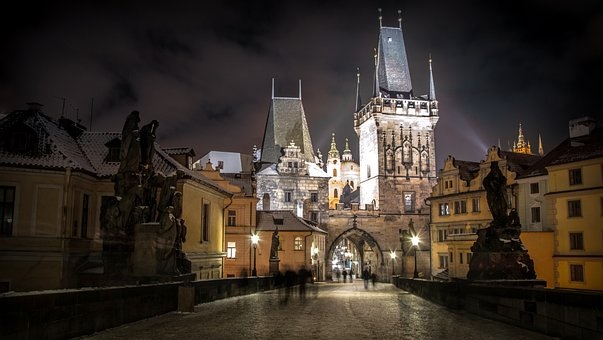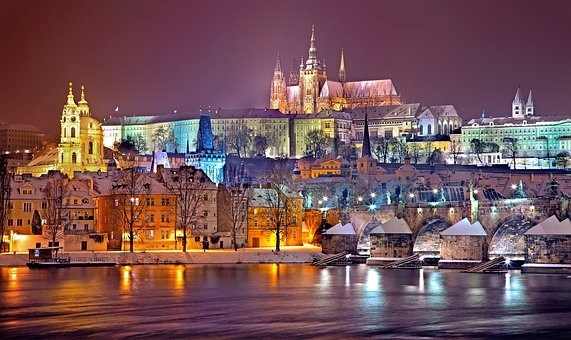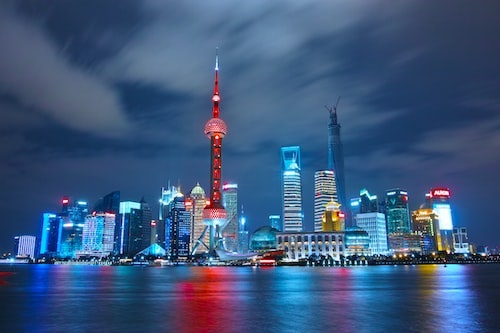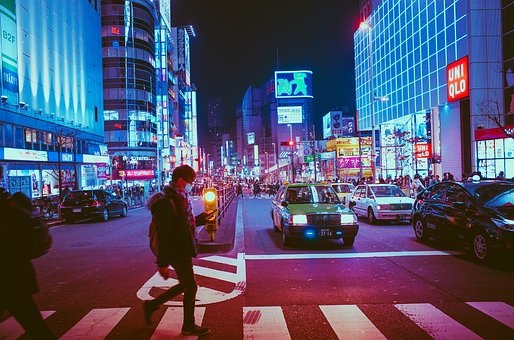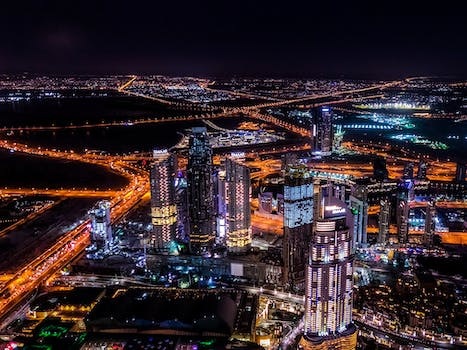मला आठवते मी लहान असताना, उन्हाळ्याच्या संध्याकाळी ग्रामीण भागात, सिकाड्स किलबिलाट आणि बेडूक आवाज करत होते. जेव्हा मी माझे डोके वर केले तेव्हा मी तेजस्वी ताऱ्यांमध्ये आदळलो. प्रत्येक तारा प्रकाश, गडद किंवा तेजस्वी पसरतो, प्रत्येकाचे स्वतःचे आकर्षण असते. रंगीबेरंगी स्ट्रीमर्स असलेली आकाशगंगा सुंदर आहे आणि कल्पनाशक्ती जागृत करते.
जेव्हा मी मोठा झालो, आणि शहरातील आकाशाकडे पाहिले, तेव्हा मी धुराच्या थरांनी अस्पष्ट होतो आणि मला असे आढळले की मला काही तारे दिसत नाहीत. सर्व तारे गायब झाले आहेत का?
तारे शेकडो लाखो वर्षांपासून आहेत आणि प्रकाश प्रदूषणामुळे शहरांच्या वाढीमुळे त्यांचा प्रकाश अस्पष्ट झाला आहे.
तारे न दिसण्याचा त्रास
4,300 वर्षांपूर्वी, प्राचीन चिनी लोक आधीच प्रतिमा आणि काळाचे निरीक्षण करण्यास सक्षम होते. ते उघड्या डोळ्यांनी तारांकित आकाशाचे निरीक्षण करू शकतात, अशा प्रकारे 24 सौर संज्ञा निर्धारित करतात.
परंतु जसजसे शहरीकरण वेगाने होत आहे, शहरांमध्ये राहणा-या अधिकाधिक लोकांना असे दिसून येत आहे की तारे "पडले" आहेत आणि रात्रीची चमक नाहीशी होत आहे.
प्रकाश प्रदूषणाची समस्या आंतरराष्ट्रीय खगोलशास्त्रीय समुदायाने 1930 मध्ये पुढे मांडली होती, कारण बाहेरील शहरी प्रकाशामुळे आकाश उजळते, ज्याचा खगोलशास्त्रीय निरीक्षणावर मोठा नकारात्मक प्रभाव पडतो, ज्याला "ध्वनी आणि प्रकाश प्रदूषण", "प्रकाश नुकसान" आणि “प्रकाश हस्तक्षेप”, इ., जगातील सर्वात व्यापक प्रदूषणांपैकी एक आहे, ज्याकडे दुर्लक्ष करणे सोपे आहे.
2013 मध्ये, चिनी शहराच्या दिव्यांची चमक वाढणे ही पर्यावरण संरक्षणाची सर्वात गंभीर समस्या बनली.
इटली, जर्मनी, युनायटेड स्टेट्स आणि इस्रायलमधील संशोधकांनी आता 80 टक्क्यांहून अधिक लोकसंख्येला कोणत्याही प्रकारच्या कृत्रिम प्रकाशाच्या संपर्कात असलेल्या ग्रहावरील प्रकाश प्रदूषणाच्या परिणामांचे आजपर्यंतचे सर्वात अचूक ॲटलस तयार केले आहेत आणि जेथे सुमारे 80 युरोप आणि युनायटेड स्टेट्समधील टक्के लोक आकाशगंगा पाहू शकत नाहीत.
सायन्स ॲडव्हान्सेसमध्ये प्रकाशित झालेल्या एका अभ्यासानुसार, प्रकाश प्रदूषणामुळे जगातील एक तृतीयांश लोकसंख्या यापुढे रात्रीच्या आकाशातील तेजस्वी तारे पाहू शकत नाही.
एका अमेरिकन सर्वेक्षण अहवालात असे दिसून आले आहे की जगातील सुमारे 2/3 लोक प्रकाश प्रदूषणात जगतात. शिवाय, कृत्रिम प्रकाशामुळे होणारे प्रदूषण दरवर्षी वाढत आहे, जर्मनीमध्ये 6%, इटलीमध्ये 10% आणि जपानमध्ये 12% वार्षिक वाढ आहे.
प्रकाश प्रदूषणाचे वर्गीकरण
रात्रीची रंगीबेरंगी दृश्ये शहरी समृद्धीचे ग्लॅमर अधोरेखित करतात आणि या तेजस्वी जगात लपलेले सूक्ष्म प्रकाश प्रदूषण आहे.
प्रकाश प्रदूषण ही सापेक्ष संकल्पना आहे. याचा अर्थ असा नाही की परिपूर्ण मूल्य गाठणे म्हणजे प्रकाश प्रदूषण. दैनंदिन उत्पादनात आणि जीवनात, डोळ्यांमध्ये प्रवेश करण्यासाठी विशिष्ट प्रमाणात प्रकाश आवश्यक असतो, परंतु एका विशिष्ट मर्यादेच्या पलीकडे जादा प्रकाशामुळे आपल्याला दृश्यमान अस्वस्थता जाणवते आणि त्यामुळे शारीरिक प्रतिकूल प्रतिक्रिया देखील होतात, ज्याला "प्रकाश प्रदूषण" म्हणतात.
प्रकाश प्रदूषणाची अभिव्यक्ती वेगवेगळ्या कालावधीत भिन्न असते, म्हणजे चकाकी, हस्तक्षेप प्रकाश आणि आकाशातून सुटलेला प्रकाश.
चकाकी मुख्यतः दिवसा काचेच्या दर्शनी भागातून परावर्तित होणाऱ्या सूर्यप्रकाशामुळे आणि रात्रीच्या वेळी, दृश्य कार्यात व्यत्यय आणणाऱ्या लाइटिंग फिक्स्चरमुळे होते. इंटरफेरन्स लाइट हा आकाशातून येणारा प्रकाश आहे जो लिव्हिंग रूमच्या खिडकीच्या पृष्ठभागावर पोहोचतो. आणि कृत्रिम उगमातून निघणारा प्रकाश जर आकाशात गेला तर त्याला आपण आकाशदृष्टी म्हणतो.
आंतरराष्ट्रीय स्तरावर प्रकाश प्रदूषणाची तीन प्रकारांमध्ये विभागणी केली जाते, ते म्हणजे पांढरा प्रकाश प्रदूषण, कृत्रिम दिवस, रंग प्रकाश प्रदूषण.
पांढऱ्या प्रदुषणाचा अर्थ मुख्यत्वे असा होतो की जेव्हा सूर्य प्रकर्षाने चमकतो तेव्हा काचेच्या पडद्याची भिंत, चकचकीत विटांची भिंत, पॉलिश केलेले संगमरवरी आणि विविध कोटिंग्ज आणि शहरातील इमारतींचे इतर सजावट प्रकाश परावर्तित करतात, ज्यामुळे इमारती पांढर्या आणि चमकदार बनतात.
आर्टिफिशियल डे म्हणजे शॉपिंग मॉल्स, हॉटेल्स रात्री गळून पडल्यानंतर जाहिरातींचे दिवे, निऑन दिवे चमकदार, चमकदार, काही मजबूत प्रकाश किरण अगदी थेट आकाशात, रात्रीला दिवस बनवतात, ज्याला तथाकथित कृत्रिम दिवस म्हणतात.
रंग प्रकाश प्रदूषण प्रामुख्याने काळा प्रकाश, फिरणारा प्रकाश, फ्लोरोसेंट प्रकाश आणि मनोरंजनाच्या ठिकाणी स्थापित केलेले फ्लॅशिंग कलर लाइट स्त्रोत रंगीत प्रकाश प्रदूषण करतात.
*प्रकाश प्रदूषण मानवी आरोग्याशी संबंधित आहे का?
प्रकाश प्रदूषण हे प्रामुख्याने अशा घटनेला संदर्भित करते की अत्यधिक ऑप्टिकल रेडिएशनमुळे मानवी जीवनावर आणि उत्पादन वातावरणावर प्रतिकूल परिणाम होतो, जे प्रकाश प्रदूषणाशी संबंधित आहे. प्रकाश प्रदूषण खूप सामान्य आहे. हे मानवी जीवनाच्या प्रत्येक पैलूमध्ये अस्तित्त्वात आहे आणि लोकांच्या जीवनावर अदृश्यपणे परिणाम करते. प्रकाश प्रदूषण लोकांच्या आजूबाजूला असले तरी, प्रकाश प्रदूषणाची तीव्रता आणि मानवी शारीरिक आणि मानसिक आरोग्यावर प्रकाश प्रदूषणाचा प्रभाव याबद्दल बरेच लोक अजूनही अनभिज्ञ आहेत.
*डोळ्यांना इजा
शहरी बांधकामाचा विकास आणि विज्ञान आणि तंत्रज्ञानाच्या प्रगतीमुळे, लोक जवळजवळ स्वतःला "मजबूत प्रकाश आणि कमकुवत रंग" "कृत्रिम दृश्य वातावरणात" ठेवतात.
दृश्यमान प्रकाशाच्या तुलनेत, इन्फ्रारेड प्रदूषण उघड्या डोळ्यांनी दिसू शकत नाही, ते थर्मल रेडिएशनच्या स्वरूपात दिसून येते, उच्च तापमानाला दुखापत करणे सोपे आहे. 7500-13000 angstroms च्या तरंगलांबी असलेल्या इन्फ्रारेड किरणांमध्ये कॉर्नियामध्ये उच्च संप्रेषण असते, ज्यामुळे डोळयातील पडदा जळू शकतो आणि मोतीबिंदू होऊ शकतो. एक प्रकारचे इलेक्ट्रोमॅग्नेटिक वेव्ह म्हणून, अल्ट्राव्हायोलेट किरण बहुतेक सूर्यापासून येतात. अतिनील किरणांच्या दीर्घकाळ संपर्कात राहिल्यास सुरकुत्या, सनबर्न, मोतीबिंदू, त्वचेचा कर्करोग, व्हिज्युअल नुकसान आणि प्रतिकारशक्ती कमी होते.
*झोपेत व्यत्यय आणतो
जरी लोक डोळे बंद करून झोपतात, तरीही प्रकाश त्यांच्या पापण्यांमधून जाऊ शकतो आणि झोपेत व्यत्यय आणू शकतो. त्याच्या क्लिनिकल आकडेवारीनुसार, सुमारे 5%-6% निद्रानाश हा आवाज, प्रकाश आणि इतर पर्यावरणीय घटकांमुळे होतो, ज्यापैकी प्रकाशाचा वाटा सुमारे 10% आहे. "जेव्हा निद्रानाश होतो, तेव्हा शरीराला पुरेशी विश्रांती मिळत नाही, ज्यामुळे आरोग्याच्या गंभीर समस्या उद्भवू शकतात."
*कर्करोग होतो
अभ्यासानुसार रात्रीच्या शिफ्टच्या कामाचा संबंध स्तन आणि प्रोस्टेट कर्करोगाच्या वाढीशी आहे.
इंटरनॅशनल क्रोनोबायोलॉजी जर्नलमधील 2008 चा अहवाल याची पुष्टी करतो. शास्त्रज्ञांनी इस्रायलमधील 147 समुदायांचे सर्वेक्षण केले आणि असे आढळून आले की प्रकाश प्रदूषणाची उच्च पातळी असलेल्या महिलांना स्तनाचा कर्करोग होण्याची शक्यता जास्त असते. याचे कारण असे असू शकते की अनैसर्गिक प्रकाश मानवी शरीराच्या रोगप्रतिकारक शक्तीला अडथळा आणतो, हार्मोन्सच्या उत्पादनावर परिणाम करतो, अंतःस्रावी समतोल नष्ट होतो आणि कर्करोग होतो.
* प्रतिकूल भावना निर्माण करा
प्राण्यांच्या मॉडेल्सच्या अभ्यासातून असे दिसून आले आहे की जेव्हा प्रकाश अपरिहार्य असतो तेव्हा त्याचा मूड आणि चिंतांवर विपरीत परिणाम होऊ शकतो. जर लोक बराच काळ रंगीत दिव्यांच्या किरणोत्सर्गाखाली असतील तर त्याचा मानसिक संचय परिणाम देखील थकवा आणि अशक्तपणा, चक्कर येणे, न्यूरास्थेनिया आणि इतर शारीरिक आणि मानसिक रोगांना वेगवेगळ्या प्रमाणात कारणीभूत ठरेल.
*प्रकाश प्रदूषण कसे रोखायचे?
प्रकाश प्रदूषण प्रतिबंध आणि नियंत्रण हा एक सामाजिक प्रणाली प्रकल्प आहे, ज्यासाठी सरकार, उत्पादक आणि व्यक्तींचा पूर्ण सहभाग आणि संयुक्त प्रयत्न आवश्यक आहेत.
शहरी नियोजनाच्या दृष्टीकोनातून, प्रकाश प्रदूषणावर वाजवी मर्यादा निश्चित करण्यासाठी प्रकाश नियम हे एक महत्त्वाचे साधन आहे. जीवांवर कृत्रिम प्रकाशाचा प्रभाव प्रकाशाची तीव्रता, स्पेक्ट्रम, प्रकाशाची दिशा (जसे की बिंदू प्रकाश स्रोताचे थेट विकिरण आणि आकाशीय ग्लोचा प्रसार) यावर अवलंबून असल्याने, प्रकाश नियोजन तयार करताना प्रकाशाच्या विविध घटकांवर नियंत्रण ठेवणे आवश्यक आहे. , प्रकाश स्रोत, दिवे आणि प्रकाश मोडच्या निवडीसह.
आपल्या देशातील काही लोकांना प्रकाश प्रदूषणाची हानी कळते, म्हणून या संदर्भात कोणतेही एकसमान मानक नाही. लँडस्केप लाइटिंगचे तांत्रिक मानक शक्य तितक्या लवकर स्थापित करणे आवश्यक आहे.
आधुनिक लोकांच्या उच्च दर्जाच्या प्रकाशयोजनेची पूर्तता करण्यासाठी, आम्ही "निरोगी प्रकाश आणि बुद्धिमान प्रकाशयोजना" चे समर्थन करतो, प्रकाश वातावरण सर्वसमावेशकपणे अपग्रेड करतो आणि मानवतावादी प्रकाश सेवा अनुभव प्रदान करतो.
"निरोगी प्रकाश" म्हणजे काय? म्हणजेच, नैसर्गिक प्रकाशाच्या जवळ असलेला प्रकाश स्रोत. प्रकाश आरामदायक आणि नैसर्गिक आहे आणि रंगाचे तापमान, ब्राइटनेस, प्रकाश आणि सावली यांच्यातील सुसंवाद पूर्णपणे विचारात घ्या, निळ्या प्रकाशाची हानी टाळा (R12), लाल प्रकाशाची सापेक्ष ऊर्जा (R9) वाढवा, निरोगी, सुरक्षित आणि आरामदायक तयार करा. प्रकाशमय वातावरण, लोकांच्या मनोवैज्ञानिक भावनांना भेटणे, शारीरिक आणि मानसिक आरोग्यास प्रोत्साहन देणे.
जेव्हा मानव शहराच्या समृद्धीचा आनंद घेतात तेव्हा सर्वव्यापी प्रकाश प्रदूषणापासून वाचणे कठीण आहे. प्रकाश प्रदूषणाचे नुकसान मानवाने योग्यरित्या समजून घेतले पाहिजे. त्यांनी केवळ त्यांच्या राहण्याच्या वातावरणाकडेच लक्ष दिले पाहिजे असे नाही तर प्रकाश प्रदूषण वातावरणाचा दीर्घकाळ संपर्क टाळावा. प्रकाश प्रदूषण रोखण्यासाठी आणि नियंत्रणासाठी देखील प्रत्येकाच्या एकत्रित प्रयत्नांची आवश्यकता आहे, खरोखरच प्रकाश प्रदूषण रोखण्यासाठी स्त्रोतापासून.
पोस्ट वेळ: फेब्रुवारी-15-2023



